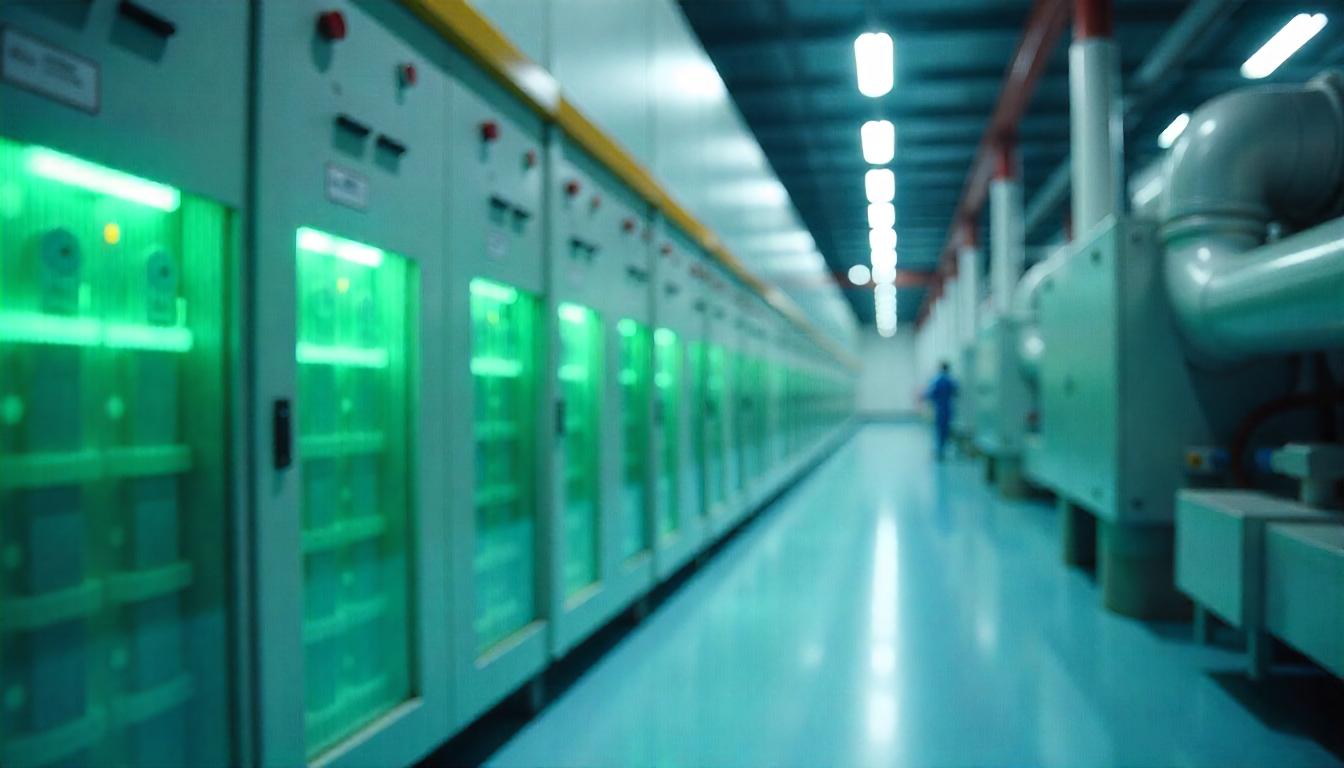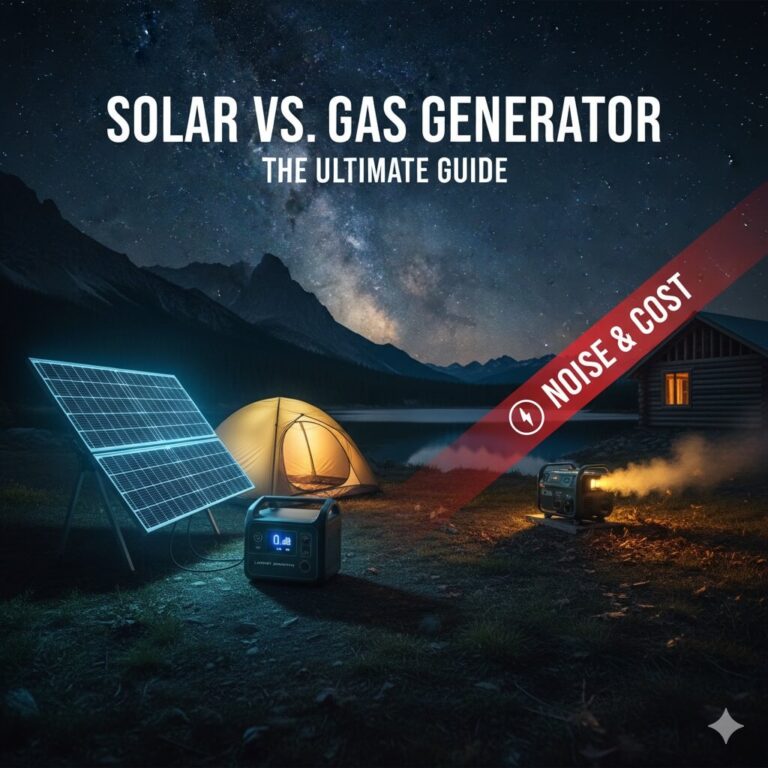Beyond the Battery Boom: Investing in the Future of Energy Storage (Top Trends & Companies for 2025)

The global energy landscape is undergoing a profound transformation. As nations race towards ambitious decarbonization goals, renewable energy sources like solar and wind are rapidly expanding their footprint. However, the inherent intermittency of these sources presents a fundamental challenge: the sun doesn’t always shine, and the wind doesn’t always blow. This is where energy storage steps in, acting as the critical “missing link” for a stable, resilient, and fully renewable grid.
For years, lithium-ion batteries have been the go-to solution, fueling everything from electric vehicles to grid-scale projects. But their limitations—including rising costs, supply chain vulnerabilities, environmental concerns, and challenges in providing true long-duration storage—are pushing the boundaries of innovation. The market is evolving rapidly, with a diverse array of groundbreaking technologies emerging to meet the escalating demand. The global long-duration energy storage (LDES) market alone was valued at $279.44 billion in 2024, projected to reach $304.49 billion in 2025 and an impressive $652.15 billion by 2034, growing at an 8.84% compound annual growth rate (CAGR). This article will guide investors through the most promising energy storage investment trends for 2025, highlighting exciting new technologies and the innovative energy storage companies to watch that are shaping the next wave of green investment.
- 1. The Long-Duration Game-Changers: Unlocking 24/7 Green Power
- 2. The Material Frontier: Non-Lithium Battery Alternatives & Solid-State Revolution
- 3. The Digital Brain: AI, IoT, & Smart Energy Management Systems
- 4. Decentralization & Service Models: The Accessibility & Flexibility Push
- 5. Evaluating Your Investment: Key Considerations for Energy Storage Stocks
- Conclusion: Powering Your Portfolio with the Next Wave of Green Energy Storage
- Frequently Asked Questions (FAQs) About Energy Storage Investment
- Q1: What is long-duration energy storage (LDES), and why is it important for investors?
- Q2: Are non-lithium battery technologies safer to invest in than lithium-ion?
- Q3: How do AI and smart management systems add value to energy storage investments?
- Q4: Can I invest in energy storage through ETFs, and if so, which ones focus beyond traditional batteries?
- Q5: What are the biggest risks specific to investing in emerging energy storage technologies?
1. The Long-Duration Game-Changers: Unlocking 24/7 Green Power
The holy grail of renewable energy is reliable, round-the-clock power. While lithium-ion is excellent for short-to-medium duration (4-8 hours), truly balancing a grid reliant on intermittent renewables requires storage capable of discharging for 10, 100, or even more hours. This is the realm of long-duration energy storage (LDES), a sector ripe for long-duration energy storage investment.
- Redox Flow Batteries (RFBs):RFBs operate by circulating liquid electrolytes containing dissolved chemical compounds through a cell, where electrochemical reactions store and release energy. Unlike conventional batteries, their power and energy capacities are independent, allowing for highly scalable and flexible designs.
- Advantages: RFBs boast impressive lifespans (often 20-30+ years with minimal degradation), are non-flammable, and can use abundant, non-toxic materials, making them a more environmentally benign choice than some alternatives.
- Companies to Watch:
- Sumitomo Electric Industries Ltd. (Japan): A pioneer in Vanadium Redox Flow Batteries (VRFBs). Sumitomo Electric is at the forefront, recently unveiling an advanced VRFB in February 2025 with 15% higher energy density, 30% cost reduction, and an operational life of up to 30 years. They are already deploying these systems in significant projects across Japan (Kyushu, Kumamoto, Oki Islands, Kashiwazaki) and have U.S. demonstration projects, accepting orders for the new VRFB in 2025.
- ESS Inc. (USA): Specializes in safe, low-cost iron flow batteries, ideal for multi-hour applications.
- Infinity Energy Systems (U.K.): Focuses on modular VRFB designs for grid and commercial applications.
- XL Batteries (USA): Developing innovative saltwater-based flow batteries, emphasizing ultra-low cost and sustainability.
- Data Insight: Research from Cervicorn Consulting notes that the electrochemical segment (which includes RFBs) is a key component of the growing LDES market, highlighting their lower environmental impact compared to other storage types.
- Iron-Air Batteries:These batteries use iron’s ability to “rust” (oxidize) and “de-rust” (reduce) as their electrochemical process. The beauty lies in the use of iron, one of the most abundant and cheapest elements on Earth.
- Advantages: Ultra-low cost, extremely long duration (up to 100 hours or more), and inherent safety due to non-flammable components.
- Companies to Watch:
- Form Energy (USA): The leading innovator in this space. Form Energy’s iron-air battery technology is gaining significant traction, with utility giant PacifiCorp‘s 2025 Integrated Resource Plan (IRP) including ambitious targets: 605MW of 100-hour iron-air battery storage by 2032, increasing to 3,073MW by 2045. Form Energy CEO Mateo Jaramillo confirmed in April 2025 that their first projects are being delivered to customers, with rapid scaling and cost reduction anticipated. Their West Virginia factory is a testament to their progress.
- Gravity Energy Storage:This mechanical storage method uses excess renewable energy to lift heavy solid blocks or other mass to a higher elevation. When power is needed, the mass is lowered, and gravity drives generators to produce electricity.
- Advantages: Extremely long operational lifespans (30-50 years), no chemical degradation, use of abundant and recyclable materials, and minimal environmental impact. They can also effectively repurpose existing infrastructure like decommissioned mine shafts.
- Companies to Watch:
- Energy Vault (Switzerland/USA): A prominent player in gravity energy storage. Their flagship Carbosulcis project in Sardinia, Italy, is a hybrid gravity + battery ESS that cleverly repurposes the shafts of a former coal mine. The prototype EV0™ system is slated for completion in 2025, with the full system operational by 2027-2028.
- Gravitricity (U.K.): Focuses on underground gravity solutions, often exploring the use of existing mine shafts.
2. The Material Frontier: Non-Lithium Battery Alternatives & Solid-State Revolution
The drive for energy independence, cost reduction, and enhanced safety is fueling the development of diverse battery chemistries beyond traditional lithium-ion. Beyond lithium-ion batteries are poised to capture a significant share, with research projecting >25% of the market by 2035.
- Sodium-Ion Batteries:Leveraging the world’s abundant sodium resources, these batteries offer a compelling alternative to lithium, particularly for cost-sensitive applications and grid-scale storage.
- Advantages: Cheaper raw materials, excellent performance in cold weather, and improved safety due to non-flammable electrolytes.
- Companies to Watch:
- CATL (China): The global battery manufacturing giant is making significant strides. In April 2025, CATL unveiled “Naxin,” the world’s first automotive-grade sodium-ion battery, with mass production scheduled to begin for heavy-duty truck starter batteries in June 2025 and for electric vehicles in December 2025. “Naxin” boasts an energy density of 175 Wh/kg and over 10,000 charge cycles.
- Altris (Sweden): Focuses on advanced sodium-ion battery cathode materials.
- LG Energy Solution (South Korea): Also actively investing in sodium-ion research and development.
- Zinc-Based Batteries (Zinc-Air, Nickel-Zinc):Zinc is another abundant and inexpensive metal, making zinc-based batteries attractive for large-scale energy storage.
- Advantages: High stability, non-flammable, and relatively low cost.
- Companies to Watch:
- Eos Energy Storage (USA): A leader in zinc-based long-duration energy storage systems (Znyth™). Eos reported its highest-ever quarterly revenue in Q1 2025 ($10.5 million) and reaffirmed its 2025 revenue guidance of $150-$190 million, driven by scaling manufacturing capacity (from 1.25 GWh to 2 GWh by year-end). They’ve secured significant agreements, including a 400 MWh utility-scale project in Puerto Rico and a 5 GWh MOU in the UK for an LDES “cap and floor” scheme.
- EnerVenue (USA): Provides durable and versatile nickel-hydrogen battery systems, particularly for harsh operating environments.
- Solid-State Batteries:These batteries replace the traditional liquid electrolyte with a solid material, promising a revolution in energy density, safety, and cycle life. While initially focused on electric vehicles, their advantages are increasingly appealing for grid applications.
- Advantages: Higher energy density (meaning more power in a smaller footprint), significantly enhanced safety (no flammable liquid electrolytes), and potentially longer cycle life.
- Companies to Watch:
- QuantumScape (USA): A prominent player developing solid-state lithium-metal batteries with a ceramic separator. In 2025, QuantumScape is focused on shipping “Cobra-based B1 samples” of its QSE-5 cells, aiming for its “first customer launch” in 2026, supported by a partnership with Volkswagen’s PowerCo. While a high-risk, high-reward investment, its technological advancements are closely watched.
- Solid Power (USA): Develops sulfide solid electrolyte technology for all-solid-state batteries, aiming for safer and more stable solutions.
- Theion (Germany): Developing solid-state sulfur batteries, promising ultra-high energy density.
3. The Digital Brain: AI, IoT, & Smart Energy Management Systems
The hardware of energy storage is only as good as the software that manages it. As the energy storage landscape becomes more complex, integrating diverse technologies and interacting with increasingly smart grids, AI in energy storage and IoT for energy grids are becoming indispensable.
- Necessity: Smart software acts as the “brain,” optimizing performance, predicting needs, and ensuring seamless integration with renewable generation and grid demands.
- Key Functions of AI/IoT in Storage:
- Predictive Analytics & Forecasting: AI algorithms analyze vast datasets to predict energy demand, renewable energy output (solar, wind), and even battery degradation, enabling optimal charge/discharge strategies.
- Real-time Optimization: Smart battery management systems (BMS) constantly adjust operations to maximize efficiency, provide crucial grid services (frequency regulation, voltage support), and respond to fluctuating electricity prices.
- Predictive Maintenance: IoT sensors monitor battery health in real-time, allowing for proactive maintenance that prevents costly failures and extends the asset’s lifespan.
- Load Balancing & Peak Shaving: Intelligent systems use stored energy to flatten demand curves, reducing strain on the grid during peak hours and minimizing energy costs.
- Companies to Watch (Software & Integration Focus):
- Stem Inc. (USA): A leader in AI-driven energy storage systems. Stem’s “Athena” platform provides intelligent insights for optimizing energy assets. In June 2025, Stem announced its support for one of the nation’s largest solar-plus-storage projects (400MW solar / 1,600 MWh storage) and achieved its first-ever quarter of positive operating cash flow in Q1 2025, with Annual Recurring Revenue (ARR) increasing to $57M, reinforcing its software-focused strategy.
- Fluence Energy (USA): A global market leader providing comprehensive energy storage products and services, including robust software platforms for system management.
- Hybrid Greentech (Denmark): Offers AI-driven storage management solutions, also expanding into Energy Storage as a Service.
4. Decentralization & Service Models: The Accessibility & Flexibility Push
The future of energy storage isn’t just about massive utility-scale projects; it’s also about distributing power closer to where it’s consumed and making storage more accessible through innovative business models.
- Distributed Energy Storage (DES):This involves deploying smaller-scale energy storage systems at commercial and industrial sites and even in residential settings.
- Advantages: Enhances local grid resilience, reduces transmission losses, and can provide backup power during outages. It empowers consumers and businesses to manage their own energy use more effectively.
- Energy Storage as a Service (ESaaS):Similar to software-as-a-service, ESaaS models allow customers to access energy storage capabilities without the high upfront capital investment of purchasing and maintaining the hardware. Providers own, operate, and maintain the systems, and customers pay a recurring fee for the energy services.
- Advantages: lowers the entry barrier for businesses and utilities, provides flexible contracts, and offloads operational complexities. This model is critical for accelerating adoption.
- Companies to Watch:
- Zenobe Energy (U.K.): A prominent player in large-scale battery storage and fleet electrification, Zenobe is actively deploying major ESaaS projects. In March 2025, Zenobe secured £220 million in financing and began construction on its 400MW/800MWh Eccles BESS project in Scotland, its largest to date. This project, which utilizes Tesla Megapack 2 XL batteries with grid-forming technology, is part of Zenobe’s commitment to delivering over 1 GW of live and contracted storage in Scotland by 2027, contributing crucial stability services to the grid.
- NineDot Energy (USA): Focuses on developing, owning, and operating distributed battery storage projects in dense urban environments, often for grid support.
- Hybrid Greentech (Denmark): Also offers ESaaS solutions, leveraging its AI-driven software.
- Second-Life Batteries:A growing trend involves repurposing electric vehicle (EV) batteries for stationary energy storage applications after their useful life in vehicles.
- Advantages: This approach offers a cost-effective and highly sustainable solution, promoting a circular economy and reducing the overall environmental footprint of battery production.
- Companies to Watch:
- Connected Energy (U.K.): A leader in developing and deploying second-life battery energy storage systems, primarily using Nissan EV batteries.
5. Evaluating Your Investment: Key Considerations for Energy Storage Stocks
Navigating the dynamic energy storage market requires a discerning eye. To make informed green energy investment opportunities, consider the following:
- Technology Maturity & Scalability: Is the company’s core technology proven at commercial scale, or is it still in early development? Assess its potential to scale rapidly to meet growing demand. Early-stage technologies may offer higher upside but come with greater risk (e.g., QuantumScape’s journey).
- Supply Chain Resilience: Investigate the company’s reliance on critical minerals and its exposure to single-source suppliers or geopolitical risks. Companies with diversified or localized supply chains are often more robust.
- Partnerships & Customer Base: Strong alliances with utilities, major industrial players, or reputable renewable energy developers indicate market acceptance and future revenue potential. Look for long-term contracts like Power Purchase Agreements (PPAs) or similar energy service agreements.
- Revenue Model & Financial Health: Understand how the company generates revenue (e.g., hardware sales, software subscriptions, project development, energy services). Evaluate its financial statements for healthy balance sheets, manageable debt levels, and a clear path to profitability, especially crucial for growth-stage companies like Eos Energy.
- Intellectual Property (IP): Patented technologies, unique processes, or proprietary software platforms provide a significant competitive advantage and moats against competition.
- ESG Factors (Beyond Green): While the sector is inherently green, delve deeper into a company’s full Environmental, Social, and Governance practices. This includes ethical sourcing of materials, responsible manufacturing, waste management, labor practices, and transparent governance. A strong ESG profile can reduce long-term risks and attract a broader investor base.
Conclusion: Powering Your Portfolio with the Next Wave of Green Energy Storage
The energy storage revolution is undeniable, moving rapidly beyond lithium-ion to embrace a diverse and innovative array of technologies. From the robust, multi-day capabilities of redox flow and iron-air batteries to the high-density promise of solid-state solutions and the critical intelligence provided by AI-driven management systems, the future of energy storage is being built on multiple fronts.
For investors, understanding these nuanced energy storage investment trends for 2025 and identifying the energy storage companies to watch is crucial. The market projections confirm aggressive growth, with LDES alone set to double in market size within the next decade. By conducting diligent research and applying the key considerations outlined, you can position your portfolio to capitalize on the profound transformation towards a resilient, decarbonized energy future.
The demand for energy storage will only escalate as renewable energy adoption continues to soar and global electricity loads (driven by electrification, AI, and data centers) expand. The future of energy storage is diverse, scalable, and increasingly intelligent.
Ready to diversify your green portfolio and invest in energy storage with greater confidence? What emerging energy storage technology excites you the most for 2025 and beyond? Share your thoughts and questions in the comments below—let’s discuss how to power a more sustainable and prosperous future together!
Frequently Asked Questions (FAQs) About Energy Storage Investment
Q1: What is long-duration energy storage (LDES), and why is it important for investors?
A: LDES refers to energy storage systems capable of discharging power for extended periods, typically 10 hours up to several days or weeks. It’s crucial for investors because it solves the intermittency problem of renewables on a larger scale, ensuring continuous power supply even during prolonged periods of low sun or wind. Investing in LDES is betting on the technology that will enable a truly 24/7 renewable grid, offering significant growth potential as grids transition.
Q2: Are non-lithium battery technologies safer to invest in than lithium-ion?
A: “Safer” is nuanced. Non-lithium battery technologies like flow batteries (e.g., vanadium, iron-air) and sodium-ion batteries generally offer advantages in terms of safety (less flammable) and resource abundance (lower supply chain risk) compared to lithium-ion. However, many are still in earlier stages of commercialization, carrying execution risk related to scaling production and achieving cost competitiveness. Lithium-ion, while having its own risks, benefits from established manufacturing and widespread deployment. Diversification across different chemistries can mitigate risk.
Q3: How do AI and smart management systems add value to energy storage investments?
A: AI and smart management systems (like advanced Battery Management Systems—BMS) are the “brains” of energy storage. They add immense value by optimizing performance (maximizing charge/discharge cycles), extending asset lifespan (predictive maintenance), improving grid integration (real-time balancing), and maximizing revenue (responding to market signals). Investing in companies with robust software capabilities ensures that the hardware assets perform at their peak efficiency and adapt to evolving grid demands, making the overall investment more resilient and profitable.
Q4: Can I invest in energy storage through ETFs, and if so, which ones focus beyond traditional batteries?
A: Yes, you can invest in energy storage through ETFs for diversification. Many broader clean energy or renewable energy ETFs (e.g., ICLN, QCLN) will have exposure to some energy storage companies. However, dedicated “beyond traditional batteries” ETFs are less common, as the market is still segmenting. For specific exposure to non-lithium or LDES, you’d generally need to research the holdings of these ETFs or consider direct investments in the companies mentioned in this article. As the sector matures, more specialized ETFs are likely to emerge.
Q5: What are the biggest risks specific to investing in emerging energy storage technologies?
A: Key risks include:
- Technological Risk: The technology may not scale efficiently, achieve promised performance, or reach cost targets.
- Commercialization Risk: Difficulty in securing large-scale orders or integrating into existing grid infrastructure.
- Funding Risk: Early-stage companies may require significant ongoing capital, and funding may dry up.
- Supply Chain Risk: Reliance on specific, potentially volatile, raw material markets or single suppliers.
- Competitive Landscape: Intense competition and rapid innovation can quickly render a technology less competitive.
- Regulatory & Policy Risk: Changes in government incentives or grid regulations can impact project economics.
Thorough due diligence on these factors is paramount before investing.



